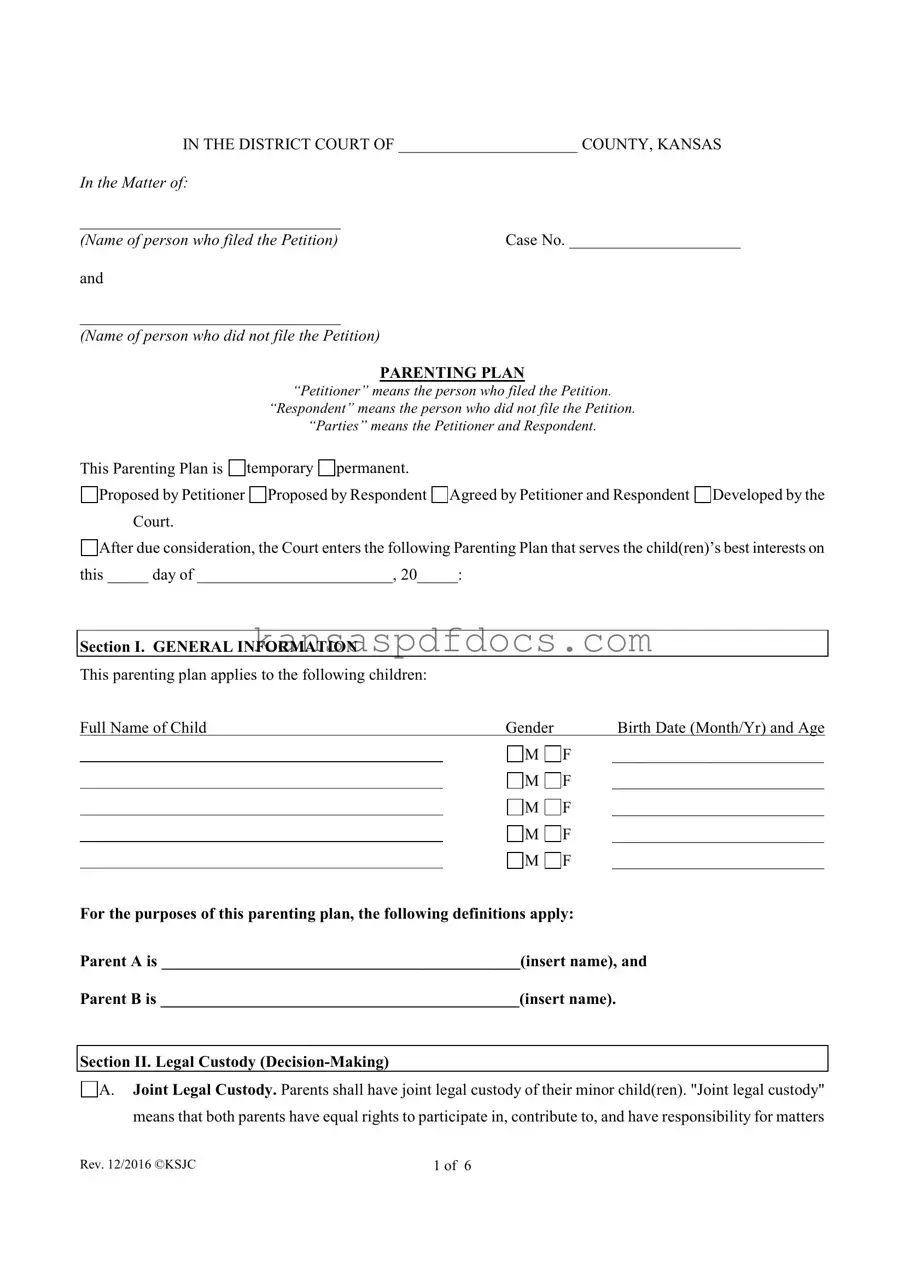The Kansas Parenting Plan form is a crucial document designed to outline the responsibilities and rights of parents following a separation or divorce. This form addresses various aspects of child custody and parenting time, ensuring that the best interests of the child are prioritized. It begins with general information about the children involved, including their names, genders, and birth dates. The form also specifies the legal custody arrangements, detailing whether parents will share joint legal custody or if one parent will have sole legal custody. A parenting time schedule is provided, outlining when each parent will spend time with the children, including weekdays, weekends, and holidays. Additionally, the form incorporates a dispute resolution process to help parents manage conflicts amicably. Special provisions for military parents are included, recognizing the unique challenges they may face regarding deployment and communication. Lastly, it requires both parents to notify each other of any address changes and outlines other essential requirements to ensure clarity and cooperation. This comprehensive approach aims to foster a cooperative parenting environment, ultimately benefiting the children involved.
